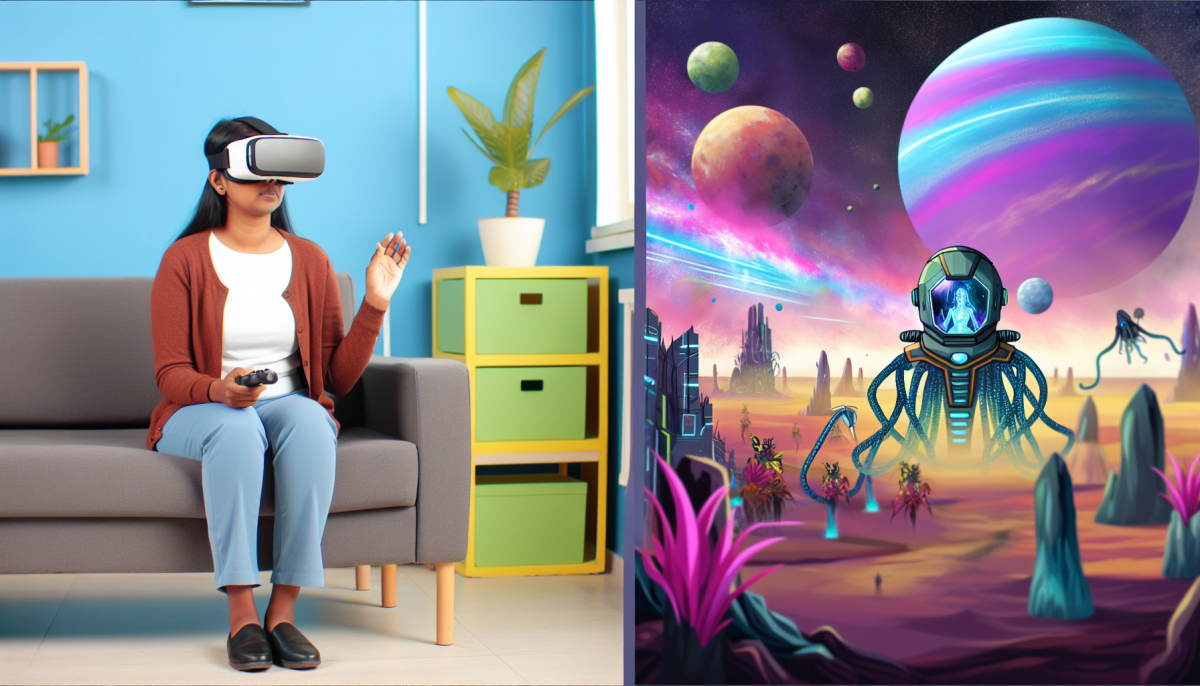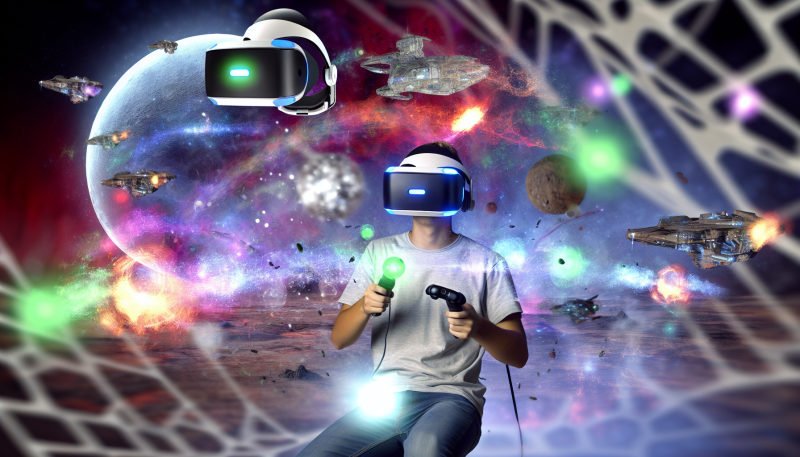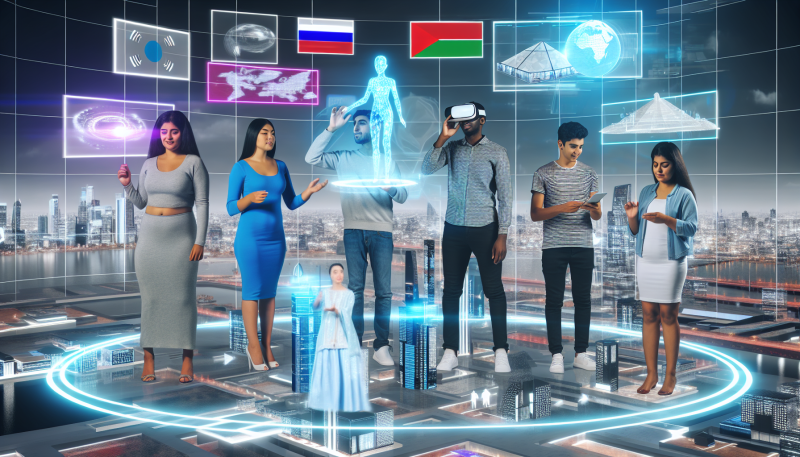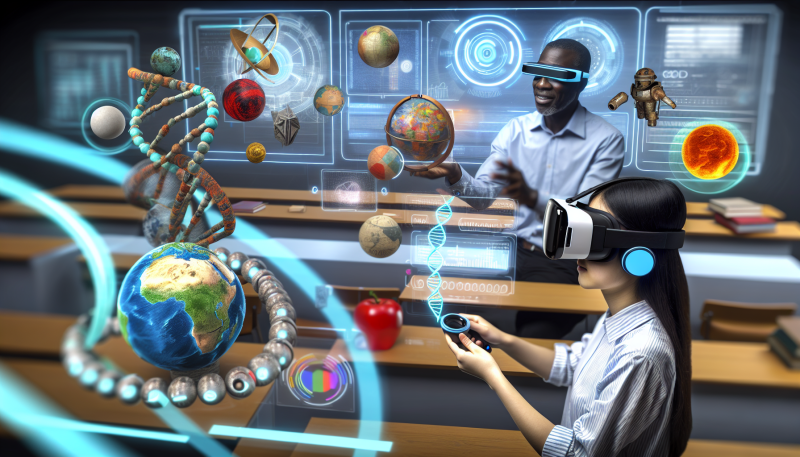Virtual reality (VR) is an exciting technology that immerses users in a digitally created environment. By wearing a VR headset, you can experience a world that feels real, whether you're exploring a new location, battling in a video game, or attending a virtual meeting. The basics of virtual reality revolve around three key components: hardware, software, and user experience.
The hardware includes the VR headsets and controllers that allow you to interact with the virtual environment. Popular headsets like the Oculus Quest or HTC Vive offer high-quality visuals and sounds, making the experience more engaging. Additionally, motion sensors track your movements, letting you look around and move as if you were truly in that space.
On the software side, various applications are designed to take advantage of VR technology. These range from educational programs to virtual tours and gaming experiences. Developers create these virtual worlds using advanced graphics and sound design to capture your senses and enhance immersion. From learning to fly a plane to exploring historical sites, the possibilities are endless.
Lastly, user experience is crucial in making VR enjoyable and effective. The design must be intuitive so that users can easily navigate the virtual space without feeling overwhelmed. Creating a comfortable and enjoyable environment helps to reduce motion sickness, allowing users to fully embrace the experience. As VR continues to evolve, understanding these basic elements will help more people unlock its real-world benefits.
Enhancing Education and Training
Virtual reality (VR) is transforming the landscape of education and training, offering immersive experiences that transcend traditional methods. Imagine a classroom where students can explore ancient civilizations by walking through a virtual replica of a Roman city or dive under the ocean to study marine biology up close. With VR, learning is no longer confined to textbooks; it becomes an adventure that enhances engagement and retention.
One of the most compelling benefits of VR in education is its ability to simulate real-life scenarios. For instance, medical students can practice surgeries in a safe, controlled environment without the risks associated with real-life procedures. This hands-on training helps build confidence and ensures that students are better prepared for their future careers. Similarly, VR can be used in corporate training to create realistic workplace scenarios, allowing employees to develop their skills in a risk-free space.
Furthermore, VR breaks down geographical barriers, enabling remote learning and making high-quality education accessible to students worldwide. Regardless of location, learners can participate in interactive lessons and activities that were previously available only in select classrooms. This inclusivity promotes diverse perspectives and ideas, enriching the learning experience for everyone involved.
Collaborative VR experiences also foster teamwork and communication skills. Students can work together in virtual settings, solving problems and completing projects that require cooperation and collaboration. This not only enhances their educational experience but also prepares them for the collaborative nature of the modern workforce.
Transforming Healthcare Experiences
Virtual reality (VR) is revolutionizing the way we experience healthcare. Imagine stepping into a fully immersive digital environment where you can familiarize yourself with medical procedures, practice skills, or receive therapy. This technology enables patients and practitioners to interact in ways that were once unimaginable, enhancing both training and treatment.
For medical students and professionals, VR offers a safe space to hone their skills. They can participate in simulations of surgeries and complex procedures without the risk of harming a patient. This hands-on practice is invaluable, allowing them to build confidence and refine their techniques. By learning in a controlled setting, healthcare workers are better prepared for real-life scenarios.
In addition to education, VR is transforming patient care. For those facing anxiety or phobias, virtual reality can provide a calming distraction. Patients undergoing painful treatments can escape into soothing landscapes or engaging environments, making their experiences more bearable. This shift not only aids in pain management but also improves overall patient satisfaction.
Moreover, VR is breaking down barriers for those unable to physically attend appointments. Telehealth has gained popularity, but VR takes it a step further by creating engaging, interactive experiences. Remote patients can have virtual consultations that feel more personal, helping to bridge the gap between healthcare providers and those they serve. This innovative approach fosters a sense of connection and community, even from a distance.
Boosting Entertainment and Recreation
Virtual reality (VR) is transforming the way we experience entertainment and recreation. Rather than just sitting on a couch watching a movie or playing a video game, VR immerses us in a three-dimensional world where we can interact with our environment. This total immersion creates unique experiences that can be both thrilling and captivating, allowing users to feel as if they are truly part of the action.
One of the most exciting applications of VR in entertainment is in gaming. Players can step into their favorite games, becoming the heroes of their own stories. With VR headsets and motion controllers, players can swing swords, shoot arrows, or even dance along with their favorite songs. This active participation takes gaming to a whole new level, providing a workout for both body and mind, enhancing physical coordination while leaving players buzzing with excitement.
Additionally, VR is making waves in the world of film and theater. With VR experiences, audiences can feel like they are right in the middle of the action, exploring every angle of a story. Filmmakers are starting to embrace this technology, creating films designed specifically for VR. This allows viewers to engage with characters in a way never before possible, walking around the scene, looking at details, and feeling a deeper emotional connection to the story being told.
Beyond gaming and film, VR is also being utilized for recreational activities like virtual travel and sports simulations. Imagine exploring the wonders of the Great Wall of China or diving into coral reefs from the comfort of your living room. Alternatively, sports enthusiasts can practice their favorite activities, like tennis or golf, within realistic virtual environments, honing their skills without the need for physical courts or courses. With these advancements, VR is not just an entertainment medium; it’s a gateway to experiences that enhance our leisure time in fun and innovative ways.



